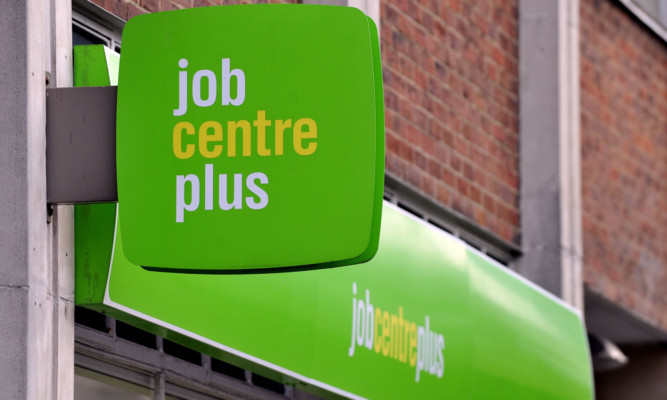A rise in the jobless total means Scotland now has a higher unemployment rate than the UK.
While unemployment across the United Kingdom fell by 102,000 between November and January, official figures show a rise of 6,000 in Scotland over the same period.
The unemployment total – which includes those who are out of work but not eligible for benefits – now stands at 162,000 in Scotland, which is 75,000 less than the peak reached during the recession in 2010.
Scotland’s unemployment rate is 5.9%, above the rate of 5.7% for the UK as a whole.
But at the same time as the jobless total increased, employment in Scotland also grew by 6,000 over the three months from November to January.
There are 2,611,000 Scots in work, according to the Office for National Statistics, which is 48,000 more than the total 12 months ago.
The Scottish employment rate remains higher than the UK’s, at 74% instead of 73.3%.
There has also been a fall in the number of people who are out of work and claiming jobseeker’s allowance, with this dropping by 2,000 from January to stand at 79,400 in February – a decrease of 27,700 on the total from February 2014.
Scottish Secretary Alistair Carmichael said the latest employment figures “round off a remarkable period of success for this government”.
He said: “We now have 174,000 more people in Scotland in work than we did in 2010. The number of women in employment has also increased by 101,000 in that time.
“That shows the real difference the economic choices of this Government have made to the lives of people in Scotland. We saw record employment in 2014, while the number of people claiming benefits has fallen by over 27,000 over the last 12 months and is down to a level last seen in June 2008.”
With the figures released on the same day as Chancellor George Osborne’s Budget, Mr Carmichael added: “Today’s Budget will build on that success as we take further steps to secure a prosperous future and manage our finances responsibly. The latest economic forecasts confirm growth will continue this year and next and strengthen the labour market further.”
But Scottish Fair Work Secretary Roseanna Cunningham called for the Budget to help the North Sea oil industry, as she highlighted a rise in the number claiming jobseeker’s allowance in both Aberdeen and Aberdeenshire.
Ms Cunningham said the “difficulties faced by the oil and gas sector” in the wake of the slump in prices may have been a factor “reinforcing the need for Chancellor George Osborne to use today’s Budget to at long last take the action on oil taxation we have been calling for since the start of the year”.
With the figures showing rising levels of female employment, she said this shows the “the real progress being made in supporting more women into work”.
Ms Cunningham added that the gender gap between male and female employment rates in Scotland had fallen to 3.8 percentage points, compared to the UK average of 9.6%.
She pledged: “Our commitment to workplace equality will mean more role models for future generations, once and for all removing any suggestion that your gender has a bearing on your abilities.
“The focus on giving young people the skills employers need is also paying off with youth unemployment falling to its lowest level since November to January 2009 and youth employment increasing 18,000 since last year.”
She said the “slight increase” in the jobless total “can be explained, in part, by falling levels of economic inactivity as more people join the labour market and start looking for work”.
Liz Cameron, chief executive of Scottish Chambers of Commerce, said the rise in unemployment was “disappointing” and is a “reminder of the challenges that continue to affect the Scottish economy”.
Ms Cameron said: “These figures cover a period when the effects of the low oil prices were beginning to bite in our oil and gas sector. That said, we should remember that employment has also increased by 6,000 over the same period and the reason for these apparently contradictory changes has been that Scotland’s pool of available workers has grown overall.”
Grahame Smith, Scottish Trades Union Congress (STUC) general secretary, said: “In advance of today’s Budget, this is a worrying set of statistics for Scotland: unemployment is up and employment is static. Scotland is one of only two nations and regions of the UK to register an increase in unemployment over the past three months.”
He added: “It is remarkable that the male employment rate is now back to where it was two years ago while the female rate has increased by 5.6%. While it’s clearly positive that women’s relative position in the labour market is improving, serious concerns remain as to the quality and security of the jobs being created.”
